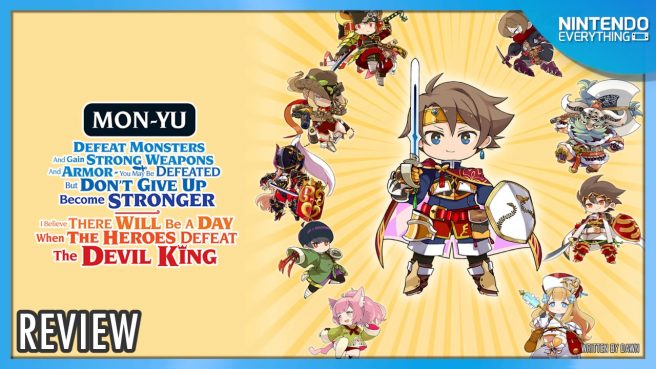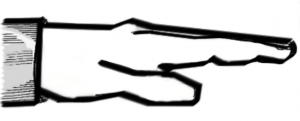System: Switch
Release date: September 21, 2023
Developer: Experience
Publisher: Aksys Games
If you’re a fan of anime or light novels, you’re probably familiar with the interesting trend of giving a series an overly long and descriptive sentence for a title. Mon Yu: Defeat Monsters and Gain Strong Weapons and Armor. You May Be Defeated, but Don’t Give Up, Become Stronger. I Believe There Will Be a Day When the Heroes Defeat the Devil King (hereafter referred to simply as just Mon-Yu for obvious reasons) is the latest in a long line of DRPGs from Experience, and has clearly been inspired by this trend in some ways, with its colorful chibi character art style suggesting a light-hearted, easygoing adventure to rid the world of evil. However, beneath this seemingly cheerful aesthetic lies a core of steel that cuts a little too sharply to be appealing.
Mon-Yu has a setting that many will find familiar. In the land of Tir na Balc, Seven Devil Kings have stolen the treasure housed in the Dragon King’s Tower, which they have also transformed into a terrible dungeon that now threatens the realm with its very existence. The queen has invited Otherworld adventures to defeat the Devil Kings, reclaim the stolen treasures, and restore peace to the land. A game with such a lengthy and descriptive title and a cutesy slice-of-life visual design would have lent itself well to a more in-depth and humorous story, so it’s somewhat disappointing that Mon Yu doesn’t have much of a narrative beyond this threadbare introduction given at the start of the game. There are a handful of characters that you will interact with as you progress, but the lack of personality makes them a distraction at best, and the game unfortunately fails to capitalize on the promise of anything more interesting than that.
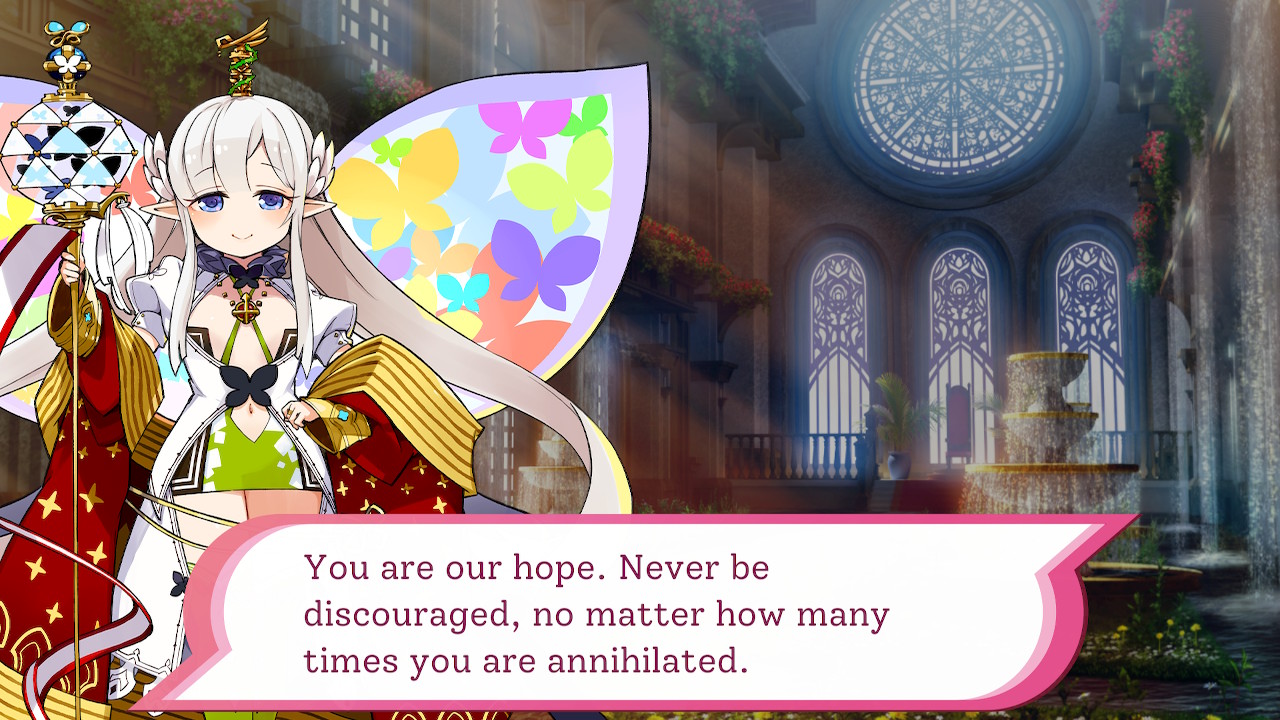
Mon-Yu is a first-person dungeon-crawling RPG, which will see players traversing floors of the Devil King’s Tower and fighting enemies all from the viewpoint of their characters. Floors are laid out in a grid-like fashion, and each step you move forward counts as one turn, although this is only relevant when you encounter enemies. As you might expect, you can find items and treasure chests on some map squares, and others may contain floor hazards such as spikes, or be impassable to the player. Some doors require keys or can only be opened from one side or once specific conditions have been met, and there are also doors hidden behind destructible walls. Most of the time the layout is fairly linear and it’s obvious where you’re supposed to go, but there were times where I struggled to find my next objective and had to intuit where a hidden door might be based on the overall layout of the map and gaps in it, so there is an element of exploration to be had.
Each floor plays out like a large environmental puzzle, with your ultimate objective being to find and defeat the boss of that floor. But to earn the privilege of challenging the boss, you’ll first need to accomplish a task unique to that area: for example, on the second level you’ll need to bait out the boss with its favorite food. This adds some nice variety to make them a little more exciting to explore, and each floor also has places you won’t be able to reach until you acquire abilities earned later in the game, adding some incentive to revisit previous levels. Unfortunately, the environments are extremely bland, with the only visual difference between different areas being the color scheme, and the same music plays across each floor as well. This feels like a huge wasted opportunity, as the layout and enemy design varies between areas, and it would have been nice if the design and audio had better reflected the theme of each named area to make them feel more distinct.
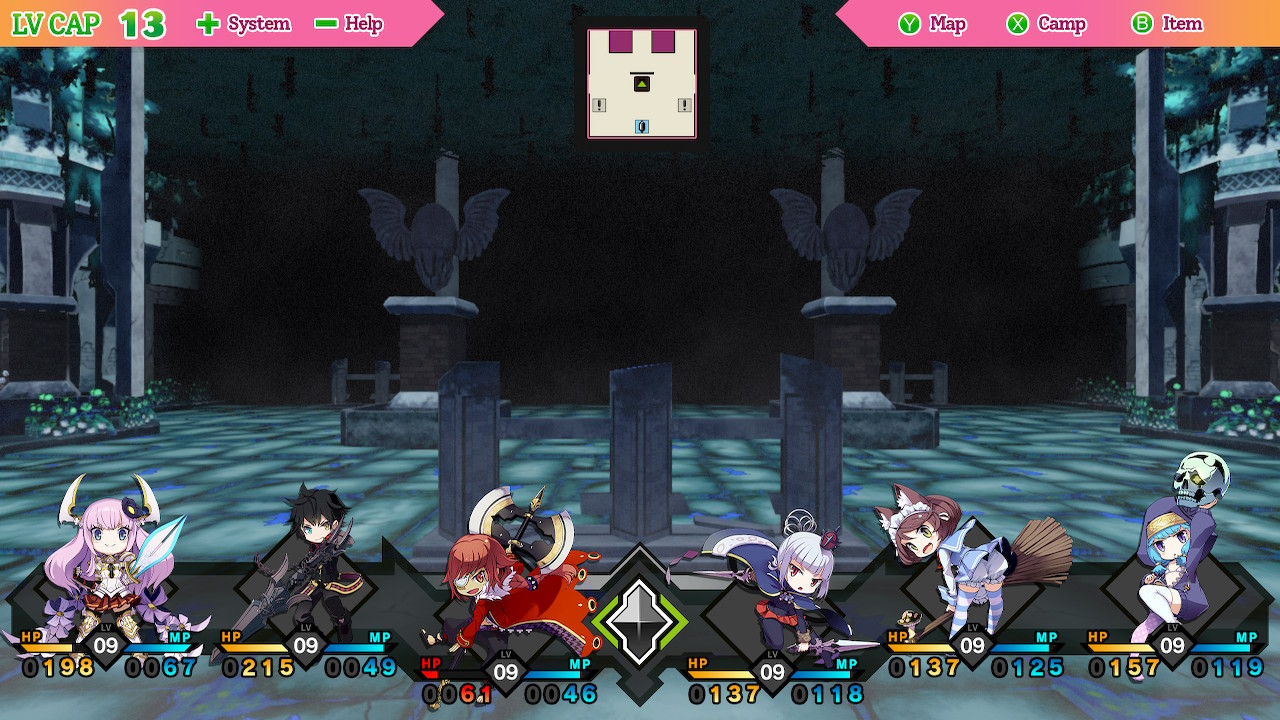
You’ll also find enemies scattered across the map, which are depicted by stylish flaming skulls. It’s a small blessing that they aren’t random encounters, allowing you to avoid them if you choose, as they will move one “space” on the map when you do. There are four different types roaming on each floor, which are color-coded for convenience: green enemies move in a fixed pattern, red are stationary, blue will flee when you approach them, and purple will pursue you relentlessly. Battles are turn-based affairs and can be sped up once you’ve picked all your actions, which is a nice feature to have when attack animations aren’t particularly dynamic or exciting, and you will see them a lot over the course of the game. You can also select “Attack All” to have every character do a basic attack on an enemy, although given the high level of damage enemies can inflict and the relative frailty of your party this isn’t something you’ll be doing very often.
While Mon-Yu only offers eight basic character jobs for you to build your party of six from, you can change between these at the registry at any time, completely resetting your ability points in the process. More notably, you can also adjust your skills at any time, including when you’re in the dungeon. This is a fantastic quality-of-life improvement for the genre, and it allowed me to make a save immediately before a boss or particularly difficult encounter and tweak my characters as needed, streamlining the process of respeccing for difficult encounters and also not requiring me to have more than the six characters I created at the start of the game either. It facilitates experimentation and strategic thinking in a very organic way, especially on floors where enemies have different weaknesses.
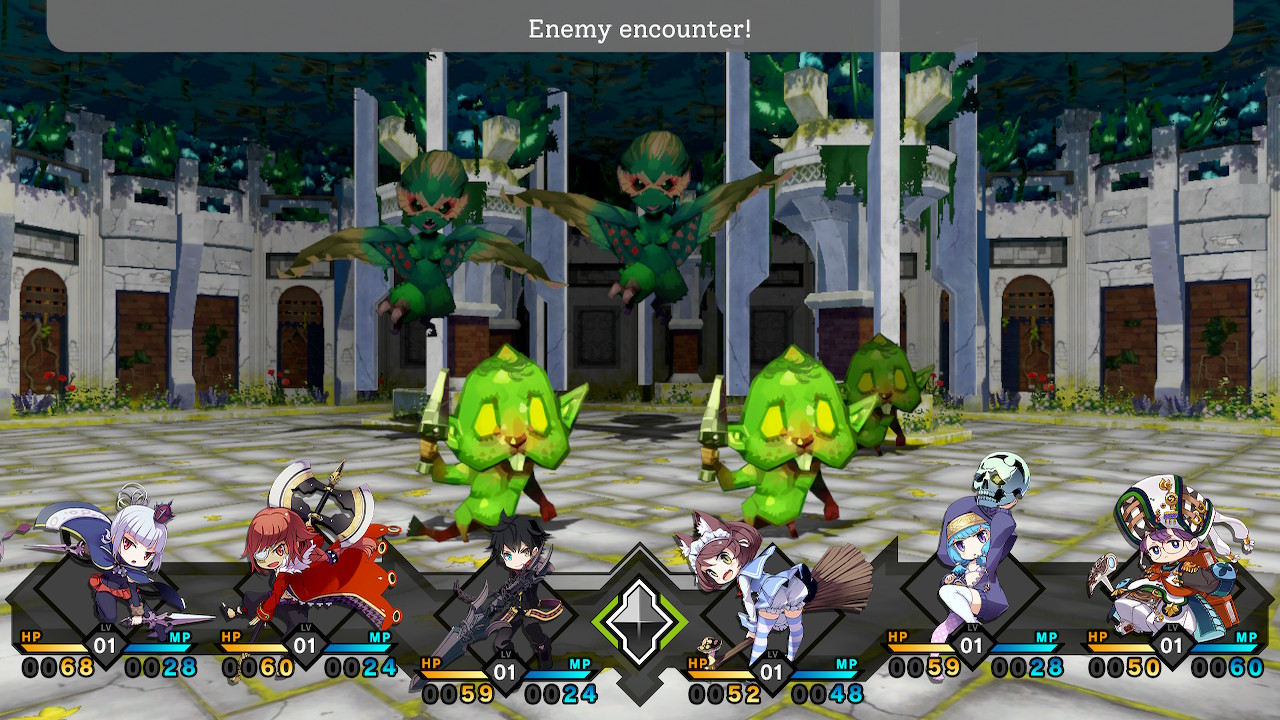
This proved to be a very important feature because even on the easiest (at least as advertised by the game) difficulty setting enemies hit hard and generally refuse to allow you to flee a battle without using an item. The autosave comes in at a clutch here, generally saving before every enemy encounter to allow for quick reloading in the event of a highly probable demise. Bosses are even more arduous affairs, each having their own personal gimmick (the boss of the third floor, for example, will phase out of existence every other turn, meaning that you can’t damage him and will need to focus on defense and preparation whilst he pummels you and inflicts confusion and paralysis) which often feels like an unfair advantage on top of their high damage output and the general lack of resources you’ll face without extreme amounts of grinding.
Defeating a boss will yield you a treasure which unlocks a new ability, and an evaluation. The evaluation is based upon three criteria: your level, how quickly you defeated the boss, and how much of the map you uncovered during your exploration. The higher your rank, the greater your rewards, which consist of items that will summon enemies to your location (presumably to make farming gold, experience, and equipment easier on the next floor) and, more crucially, a buff that increases the level of treasure chests enemies will drop by one until your next evaluation. The higher the treasure chest tier, the better the weapons and armor you’ll receive. Whilst the item rewards are a nice bonus for defeating a boss within set parameters, given how crucial equipment is to progression in Mon-Yu this latter reward feels distinctly unbalanced, and an unnecessary barrier.
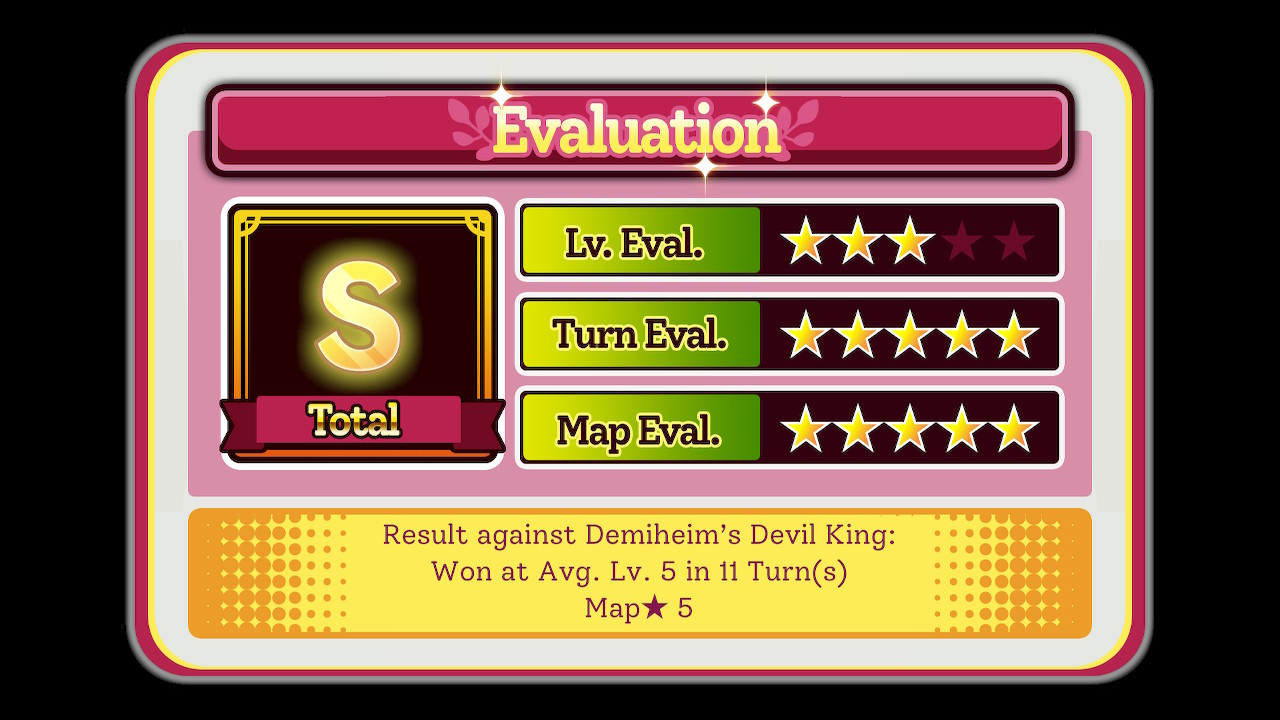
Although it has a number of poorly-explained mechanics to support it, in Mon-Yu you will live and die by the equipment you have. Weapons, armor, and accessories all gain their own levels the more you use them, have a rank that determines how strong they can become, and can often only be equipped by specific classes. When outfitting your party you’ll need to consider a wide variety of factors including but not limited to range, damage, elemental properties, and whether there are any set bonuses you could take advantage of with other pieces of equipment.
Character levels are almost useless in the game, providing you only with a point to invest in a stat of your choice, and a small increase to HP and MP depending upon the character’s job. Levels are also capped, something that felt a little unnecessary given how anti-grind the game is: enemies yield a very small amount of experience and gold per battle, and on every floor I had to grind for several hours to reach the level cap for that floor. The inclusion of levels here feels more like a formality, as the skill points you earn to invest in job skills are also acquired independently of character levels.
Mon-Yu also incorporates roguelite elements into its gameplay in a first for the genre: death in a dungeon will result in you being returned to the Queen’s Castle, where she will bless you with an increase to your HP and MP and, if applicable, a portion of any experience you’ve earned over the current level cap converted into gold. While I found this to be an interesting twist it was something that unfortunately had very little benefit, with the increases being in single digits. Items in the shop cost are also obscenely expensive for the minimal benefits they provide in combat, so any gold earned from this never contributed in any significant fashion either. It feels like more could have been done here to make the system feel like a valid and worthwhile inclusion to the game, either through greater bonuses or being able to select what stats to increase, similar to other roguelite/like titles.
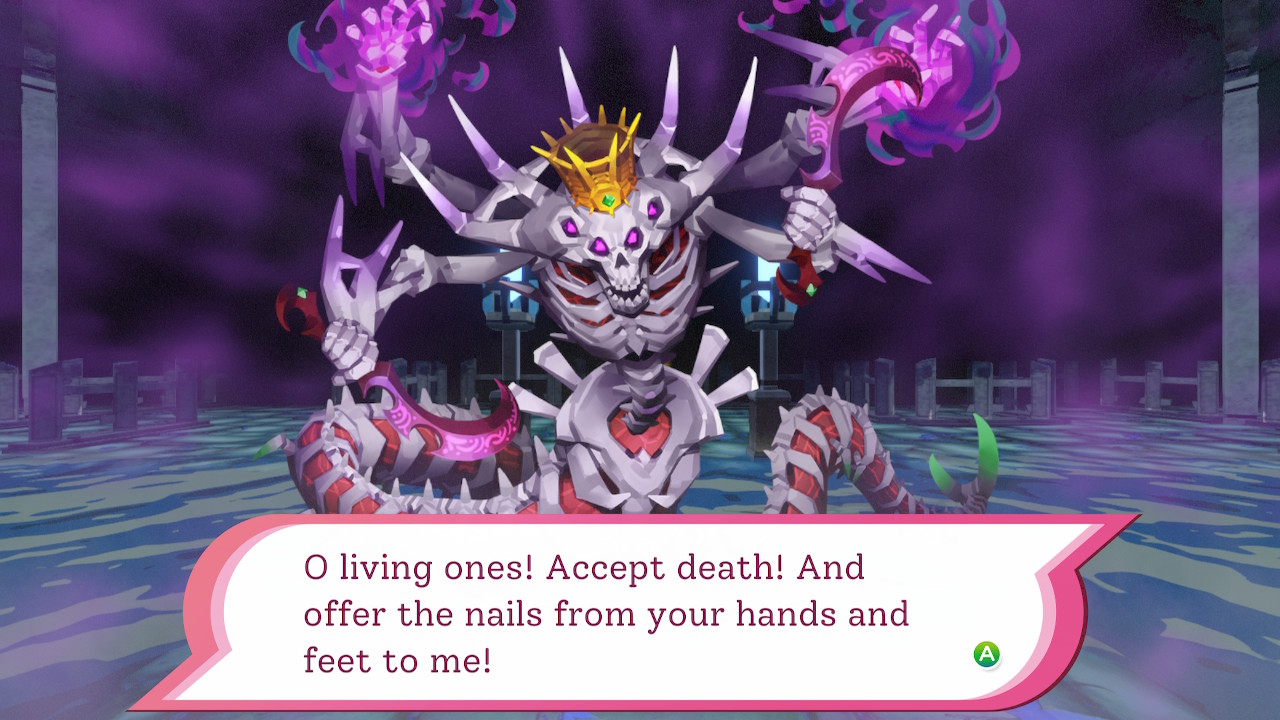
Unfortunately, the game never really takes the time to explain how it all comes together. The help menu is a mixed bag of highly informative and annoyingly vague, giving you only basic descriptions for some of the game’s mechanics but going into a high level of detail for others. Though the game prompts you to refer to it if you don’t understand the gameplay mechanics at the beginning, it fails to tell you just how much of what is contained within it is required reading. Some clearer signposting towards the help menu, or better tutorials, would have helped to make the game more accessible. But a lot of seemingly important game mechanics are never really explained at all, and it’s also very difficult to gauge their impact even if, like me, you’re a fan of the genre.
Mon-Yu’s gameplay systems feel distinctly unconnected from one another. The largest determining variable in victory or defeat, your equipment, is determined by RNG drops from treasure chests, which makes progression unbalanced at the best of times, and gives the difficulty a very artificial feeling to it when you’re stuck in a slow grind for negligible gains in experience, unknowable benefits from single-point stat boosts per level, and items that are not worth their very high cost. The end result is that victory often feels more like it came about through luck rather than a carefully planned and well-executed strategy.
The Verdict
Mon-Yu is a very difficult game to like, and a tougher one to recommend. The slow pace of grinding and punishing difficulty often make the experience more frustrating than it is rewarding. It places a high emphasis on strategy and tactics and has a lot of interesting gameplay mechanics, but frustrates this by failing to explain what (if any) value there is in engaging with them when character strength is tied to RNG-based equipment drops. The mediocre and repetitive design of the dungeons and bland narrative and cast also do it no favors in standing out amongst its peers. With other DRPGs available on the Switch that offer either a more substantial narrative or a more balanced gameplay experience (or both) any but the most seasoned veterans of the genre looking for a more challenging experience, or diehard fans of Experience, would be better off investing their time elsewhere.
Mon-Yu copy provided by the publisher for the purposes of this review.
